Interconnected Stories - Exploring A Literary Mechanic I Enjoy
I like stories that give me a way to connect them to a lot of other stories and worlds. From fantasy to
sci-fi across all possible dimensions I enjoy a story that opens up a greater world to my imaginary eye.
The Temple of a Thousand Doors and the Library of Amarganth
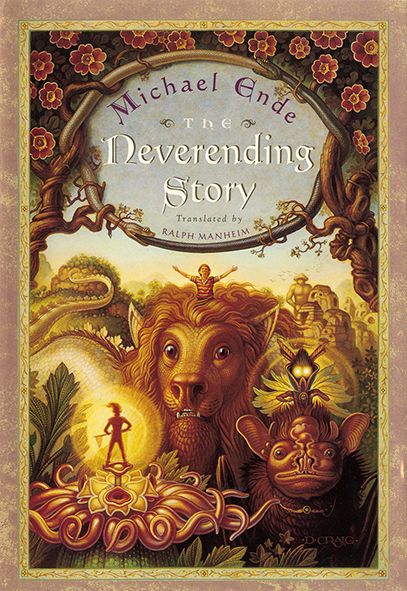
One of the first examples that I remember was in The Neverending Story by Michael Ende. In it we get introduced to two such interconnecting mechanisms.
The first is the Temple of a Thousand Doors.
No one has ever seen it from outside. The inside is a maze of doors. Anyone wishing to know it must dare to enter it. (The Neverending Story)
Any door at any time may become a door leading into the temple. Once inside the visitor is confronted by several doors to choose from. Each choice leads to more doors, until eventually, the traveler is led to the location and time they wished to get to.
I have often imagined random doors in my life suddenly revealing themselves to lead into the Temple. I have no idea where I wished to go but I knew I wanted the escape into the fantastic from a mundane life of being bullied in school. No matter how long it would have taken, I trusted the Temple to get me to where I needed to be.
The other interconnecting mechanic in The Neverending Story is of course the story of the Library of Amarganth.
After leaving the Temple of a Thousand Doors Bastian arrives at the Silver City of Amarganth. The city and its people adore stories and, after Bastian reveals himself to be a talented storyteller, ask him for more of them.
He tells them a very short story about a large building in the middle of town containing all of his other stories. They rejoice at the revelation of the meaning of that building (that of course was there all along). They then go on to read all of those stories Bastian thought of but never did anything with.
This library is a way to circumvent the process of telling one story at a time. By using such a mechanic the author gave the people of the city (and to a lesser degree, the reader) a whole lot of stories, worlds and worlds of stories, all at once.
The Library of unwritten books
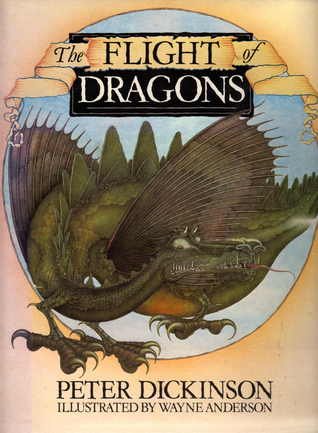
A similar technique to the Library of Amarganth was used in The Flight of Dragons by Peter Dickinson. Carolinus, the green wizard of nature’s realm, has a large library of unwritten books. He even has the book the author is writing (and the reader is reading) at that time - The Flight of Dragons.
From a certain point of view, one could argue that all books were unwritten at some point so this library could potentially hold all the books in human (or other) history. The library also contains all those books that could have been written but never were (for lack of time or for other reasons) and books that were only partly written.
Any book you can possibly conceive of has a place somewhere on the shelves of that library. Again, this is an invitation to endless worlds of fiction.
L-Space and Death’s Library
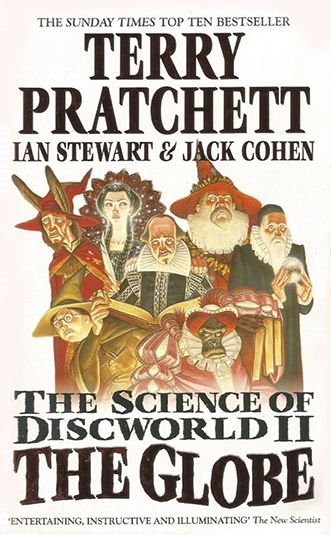
You can probably tell I love libraries so it should come as no surprise that the next two mentions are libraries as well.
The Discworld books by Terry Pratchett introduce the reader to two wonderful interconnected concepts of libraries and books.
The first is L-Space - the space connecting all libraries together, past, future and various dimensions and realities.
Knowledge = power = energy = matter = mass, and on that simple equation rests the whole of L-space. It is via L-space that all books are connected (quoting the ones before them, and influencing the ones that come after). But there is no time in L-space. Nor is there, strictly speaking, any space. Nevertheless, L-space is infinitely large and connects all libraries, everywhere and everywhen. It’s never further than the other side of the bookshelf, yet only the most senior and respected librarians know the way in. (The Globe: The Science of Discworld II)
The Librarian, a very talented orangutan (ape. Never call him a monkey) has mastered L-Space and uses its paths to save knowledge and books. He uses is to retrieve books from the Great Library in Alexandria before it burns as well as a couple of other such instances like saving books from the burning Ephebian library.
Another such comprehensive library can be found in Death’s domain. Death has an ever expanding library of all lives on the Disk. Each person or entity has some sort of book in Death’s library where his/her/its life story is being written. If that entity is dead then the book is done. Otherwise, the library is filled with the quiet scratching as an incalculable number of lives are constantly being written into life stories. The ultimate biography collection.
I always enjoyed thinking that through the book I was reading I had a small window into the Disk and so, my life story was probably being written on some far of shelf in that library.
As a library that deals not only with people but any form of entity, I also thought of it as a place to find and promote understanding. To read another’s life story is far more intimate than trying on his/her/its shoes and a better way to understand their point of view and motivations.
Shadows of Amber
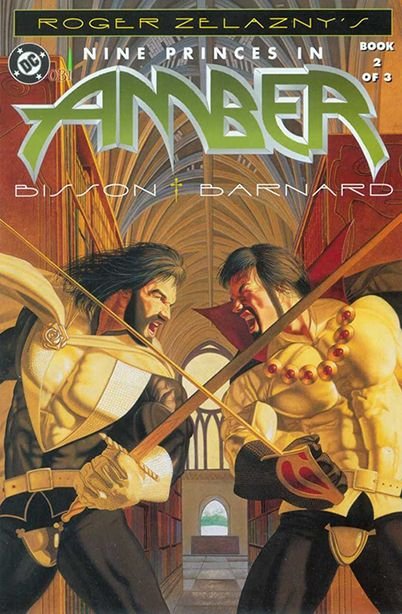
Another example of interconnecting stories are the Trumps and Shadow Shifting used by the princes of Amber in Roger Zelazny’s Amber series.
The descendants of the Amber royal family can use the power of the Pattern of Amber (the center of the ‘Real’ world) to travel by shifting shadows. No one knows for sure if the worlds they travel to were always there or were created by their imagination.
By adding and subtracting elements from the landscape around them the traveler can slowly shift the world they travel through until it matches as closely as possible the image of the destination they wish to get to.
It is a slow process involving a lot of creativity that can give birth to infinite worlds and possibilities. I tried it myself many times after reading those books, concentrating until my head hurt to try and change elements of my surrounding while walking. Unfortunately I was never successful.
If you find that shifting shadows in this way is too slow you can always use a Trump - a specially enchanted card inscribed with the image of a place or a person. You can talk to and travel to the person on the card or just travel directly to the location inscribed on it.
Corwin uses such a Trump inscribed on his prison cell by the mad Dworkin to escape prison to the Lighthouse of Cabra.
There are so many wonderful and fantastical images of places I would have liked to visit. Imagining them as Trumps, even for a little while, gave me such a chance.
Since the mechanic is so open ended it encourages the reader to imagine all the possible worlds and variations that one could shift into had we only had the power granted by the Pattern.
Libriomancy
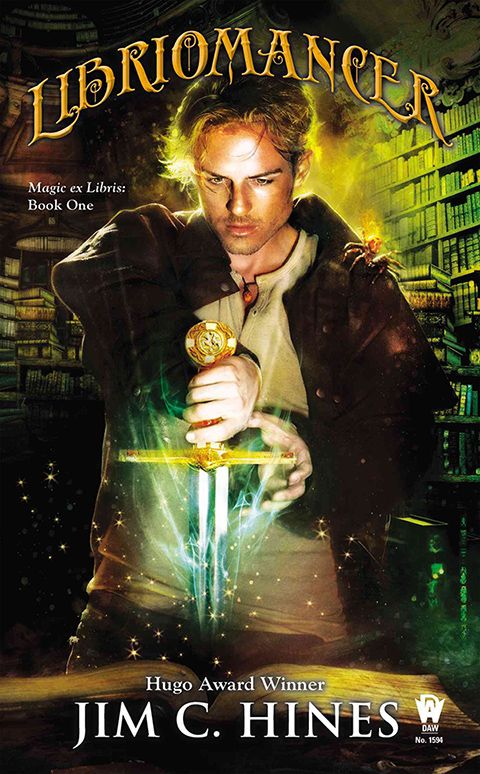
I will end with just one more example of this interconnecting story mechanic that I really loved.
In his stories about a Libriomancer, Jim C. Hines describes a method of magic that derives its power from books. The magicians of his world can draw objects and power from books. As long as an object can pass through the physical shape of the book, a powerful enough Libriomancer can pull it out and use it.
Using this the hero of the book, a book nerd not unlike the probable reader, uses items from books about Star Trek, Star Wars, Dr. Who, D&D, Narnia and many others. The hero even has a familiar Fire Spider taken from one of Hines’s previous books.
One of the methods described in the books for getting things the wizards want that are not found in other books is to publish their own books or hire famous authors to do so. Thus they ‘create’, in a sense, the very items they draw out of the book founded in communal belief.
I spent many hours thinking about all the small useful things I could pull from various books I have read. For a book describing a magical system that depends on the belief of readers I find that his books do a wonderful job in fostering that belief, not only in Hines’s work, but in other books as well, some of them existing only in Hines’s mind (and now in mine as well).
What literary mechanic do you enjoy tinkering with in your mind? Any other examples for interconnected stories you can think of?
Let me know in the comments :)
No doubt my favourite post of yours, and begs to mention two of my favourite works that have similar mechanisms.
The first is my all time favourite sci-fi novel, and possibly my all time favourite novel, Psychoshop. It is a story of a pawn shop that deals with psyche, and is located outside of time, thus allowing anyone access to it, and endless possibility of trade.
The other, and most direct relationship to Temple of a Thousand Doors is Planescape, the D&D campaign setting. In it there is Sigil, the city of doors, where every arch and every doorway is a portal to another world, all you need is the right key. A key can be anything, an object, a word, or a thought you need to keep in your mind.
I've always wanted to play a campaign in that world, but couldn't find a DM to walk me through it. Bioware/Black Isle studios though, gave me the perfect game to explore that world, Planescape: Torment. If you haven't played it, and you think you would, I'll buy you a copy. It's so good, I can't have someone with your interest not experience it.
I should read never ending story.
Was Libriomancer made into a movie? It sounds very familiar and I definitely haven't read it.
Thanks. Haven't read Psychoshop but i'll look it up. I, of course, know of Sigil but haven't played in it nor have I played the computer game yet. The Lady of Pain sounds formidable.
As far as I know the Libriomancer series wasn't made into movies yet. The first book came out around 2012 I think so probably not enough time.
Hi, I found you when you upvoted a post from my Andromeda novel, and I followed you home. Glad I did. Great article.
As far as the interconnected goes, my I also give a shoutout to Robert A. Heinlein for two of his novels, The Number of the Beast, and Job: A Comedy of Justice. Both are set in the same world. Well, not really the same world, they are in the multiverse, where every possible universe exists. And every possible book exists. It's been years since I've read either, but as it goes, somewhere in the vast multitude of worlds, there is a book somewhere that tells the story of your life. And the main character read somewhere a book about a dimension hopping car and it's occupants, which is what these characters were doing.
Upvoted and following.
@joe.nobel
science fiction, fantasy, erotica
check out some posts, no obligation to upvote or follow
but I wouldn't object to either
Thanks. I'll check them out to see if I've read them :)